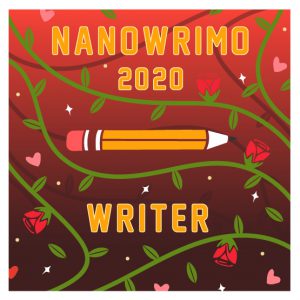The next step in our series about preparing for NaNoWriMo (National Novel Writing Month) is to consider your setting.

Why work on setting so early?
Some of you may be wondering why you should tackle setting so early in preparation. Isn’t it simply wallpaper behind the story?
Setting is a vital part of a novel. A good, concrete setting grounds the reader and can be a key element in driving the story. By evoking memories and feelings, it can influence the mood (think Hawaii versus Alcatraz.) You need to orient your readers to place and time right in the beginning of the book.
If the setting is from another era or a different world, such as for speculative fiction, fantasy, or historical fiction, it will be critical to spend time worldbuilding before you put the first word on the page.
Process
Brainstorm
Start with brainstorming. Don’t forget to include time as well as place. Is the story going to be contemporary, historical or take place in the future? What year will your story be set in? How long does it last? Is all the action finished in 24 hours or 24 years? If your story idea feels like it is jelled, jot down a rough timeline.
Do you want to have your characters stay in one place or travel widely? How are your characters going to react to the place? Do they love it or can’t wait to get away? How can the physical location add to the story? Can they do their job in that location?
Think about places you’ve lived, visited, or want to visit and jot them down. You are going to be living with the setting you choose for a long time if you write a novel, so pick one that you can be passionate about. It can help to choose a familiar time and place because you already know how it looks, smells, and sounds, but in reality, anything goes.
Research
For contemporary novels, once you have an idea of place(s), investigate them. Look at maps and search the internet. Ideally, you should visit the location(s), but that isn’t as easy as it once was. For specific suggestions, see my previous post, Seven Awesome Internet Tools for Writing Realistic Settings.
If you are thinking of historical fiction, Anne R. Allen has tips for historical writers that will help get you started (thanks Shan).
Science fiction, speculative fiction, and fantasy can be more challenging. A resource that can help with worldbuilding is Jeff VanderMeer’s Wonderbook (Revised and Expanded): The Illustrated Guide to Creating Imaginative Fiction*. I recommend it not so much for the text — although it can give you some useful tips — but more for the incredibly imaginative illustrations that will be sure to jump start your creativity. See the cover, for example.
If you a creating your own world, get familiar with some of the random place name generators. Mithril Mages has a bunch of name generators, including a Natural Terrain Feature Name Generator. Muddles also has random name and place generators.
Tip: Be sure to save the information you uncover. Make a list of links you visit, take screenshots of locations, save articles either as PDF or print or both. You can save your research notes in a folder, in Scrivener, or if you are going to use a three-ring binder, now is the time to begin organizing it. Start a tab for “setting.”
Write a Description
Before you finish for the day, write a brief description of your setting.
If you are stuck, try this helpful PDF mind map template for a descriptive essay about place from EslFlow.
What setting(s) did you choose?

I wish my novel could be set here, but it wouldn’t fit the story.
Tomorrow: The Antagonist – What or whom your protagonist is struggling with.
#####
Visit our 30 Day Novel Prep Page for all the links.





Leave a Reply